Killed in Action: The story of NFL players who gave their lives in service to their country
Writing last week’s column about the Patriots' Joe Cardona aroused my curiosity about other NFL players who served in the military. That number is so high that it would take several columns to do the topic justice. So in this column, I’m focusing on players killed in action.
Why do baseball veterans get all the credit?
Most of us remember the sad story of Cardinals safety Pat Tillman, who turned down a $3.6-million contract to enlist. He participated in the invasion of Iraq in 2003. After Army Ranger School, he deployed to Afghanistan. On April 22, 2004, Tillman was killed by friendly fire.
Digging deeper, I learned that 995 NFL players and staff served during World War II, 21 of whom died in service. I was stunned.
Only about half that number of baseball players served, but they got the lion’s share of the publicity. Several books were written about baseball’s contribution to the war effort, and stars such as Bob Feller, Ted Williams, Yogi Berra, Hank Greenberg and Warren Spahn made front-page news.
Football may have received short shrift because it was baseball’s heyday as “America’s Pastime.” Baseball players were better known, resulting in more media coverage. It was still early days for football.
However, only two MLB players lost their lives, compared with the 21 deceased gridders.
Football players also experienced more intense combat and received more decorations for valor. No MLB players earned the Medal of Honor, the Distinguished Service Cross or the Navy Cross.
By contrast, three footballers (two players and one executive) earned the Medal of Honor. Several others earned the DSC, Navy Cross and Silver Star.
Incredibly, Army captain and former Detroit Lions end Maurice Britt earned all four of the top Army awards for heroism: Medal of Honor, Distinguished Service Cross, Silver Star and Bronze Star.
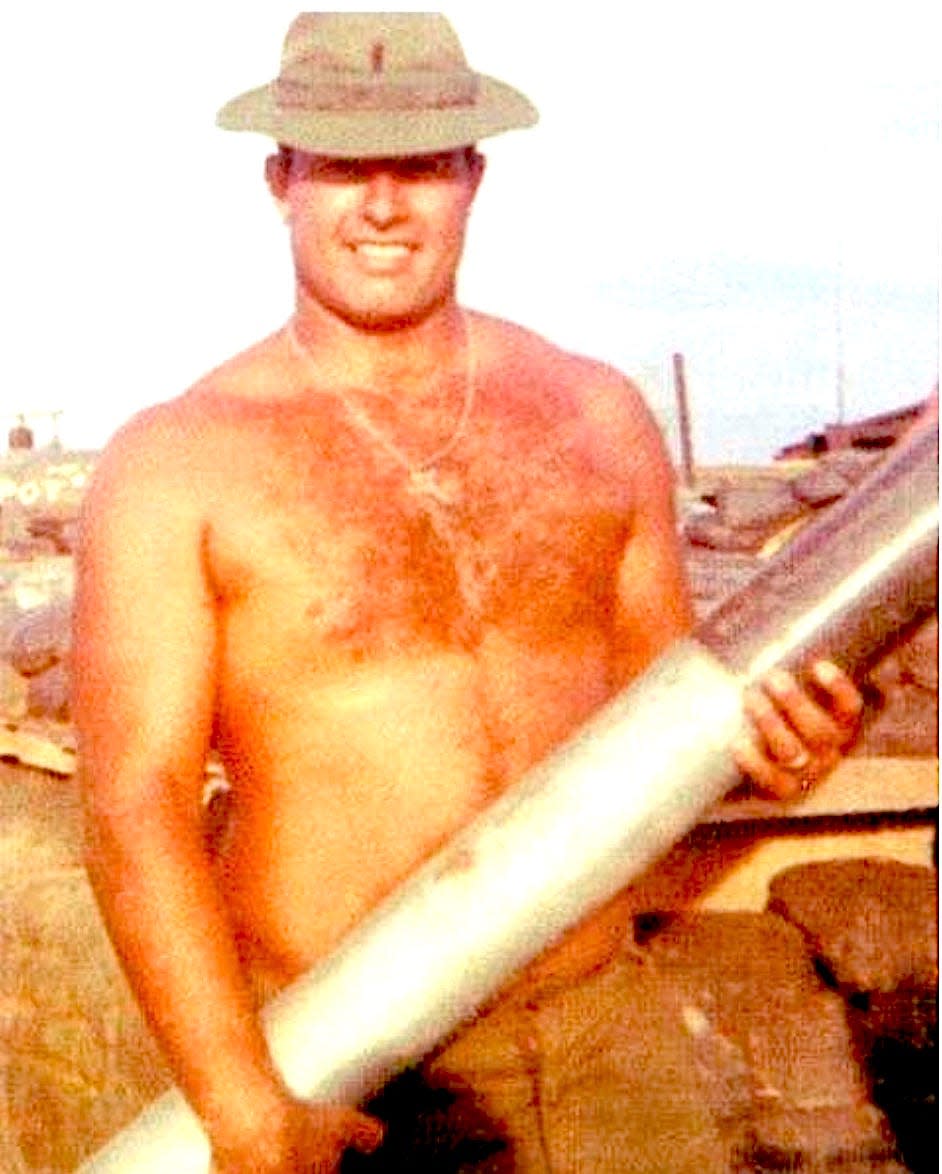
He and the famous Audie Murphy were the only two soldiers to ever accomplish that feat. Britt survived the war, as did Medal of Honor recipient Maj. Joe Foss. One of the top Marine aces of WWII, Foss later became governor of South Dakota. In 1959 he was selected as first commissioner of the new American Football League.
Last full measure: A few standout stories of heroic proportion
On Veterans Day 2011, Bleacher Report published a comprehensive report about football players and the military. That report made it clear that presenting the entire list of NFL players killed in action would be too much, so I will mention a few that stood out from combing through service records and old news clippings.
Baylor star Jack Lummus played nine games as a rookie NY Giants end in 1941 and earned the Medal of Honor at Iwo Jima in 1945.
He left football to join the Marines after Pearl Harbor, went to OCS and was commissioned in December 1942. He was in the first wave to land on Iwo Jima. On Feb.19, 1945, he singlehandedly knocked out three enemy strongholds that had his platoon pinned down. He survived several shrapnel hits, only to step on a land mine that mutilated both his legs. Incredibly, he rose on his bloody stumps and urged his men forward, insisting they not stop for him. Evacuated to a field hospital, doctors did all they could. Lummus said to one, “I guess the Giants have lost the services of a damn good end.” He died the following day.
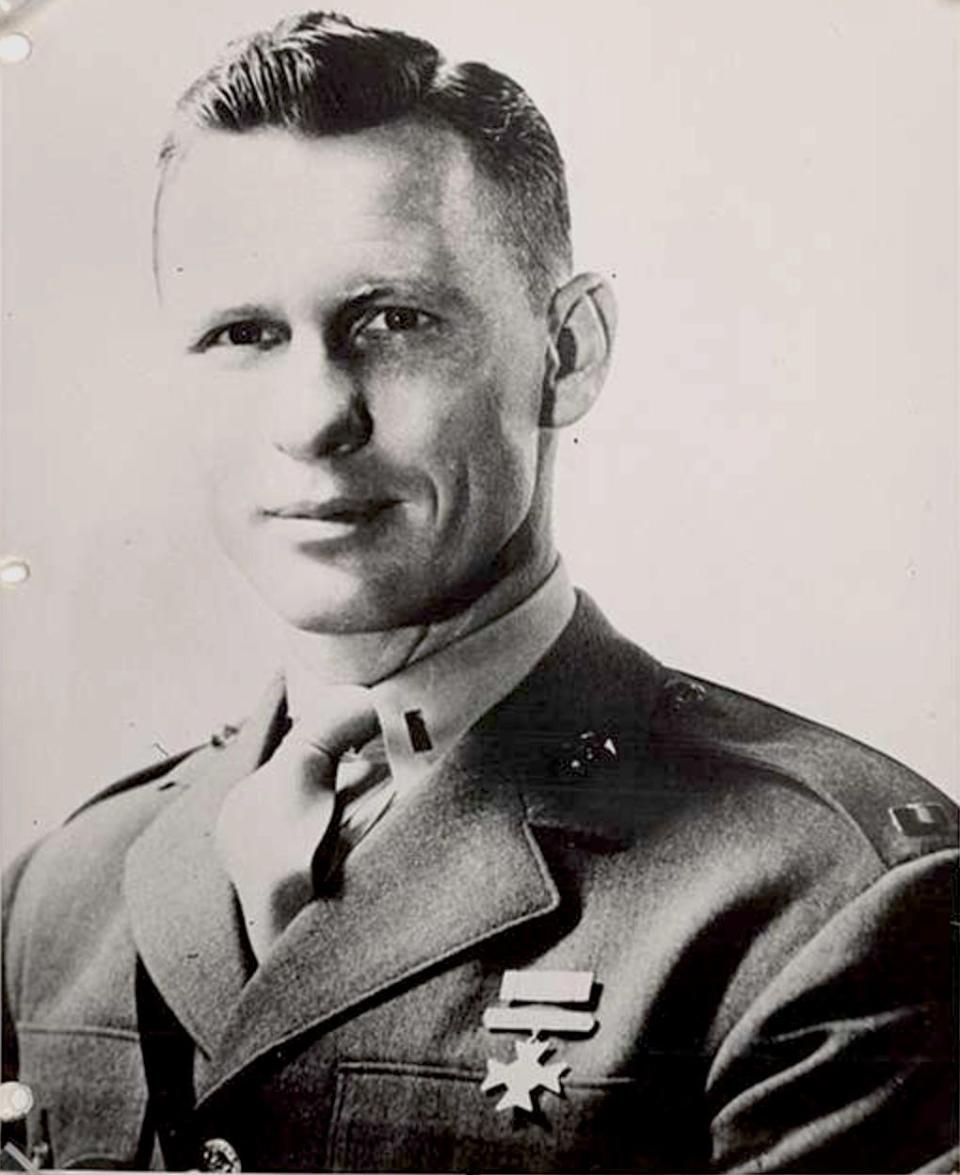
Jack Chevigny, 27th Marines, had coached the Chicago Cardinals in 1931, but was best known as the Notre Dame hero who scored the “Win one for the Gipper” touchdown against heavily favored Army in 1928.
Howard Johnson of the 23rd Marine Regiment had played two seasons with the Green Bay Packers. He earned a Silver Star at Saipan, and then he and several enlisted men were wounded by a mortar round at Iwo Jima. Johnson’s last words were, “Take care of my men first.” He died while Navy corpsmen tended to the others. Johnson was posthumously awarded a second Silver Star.
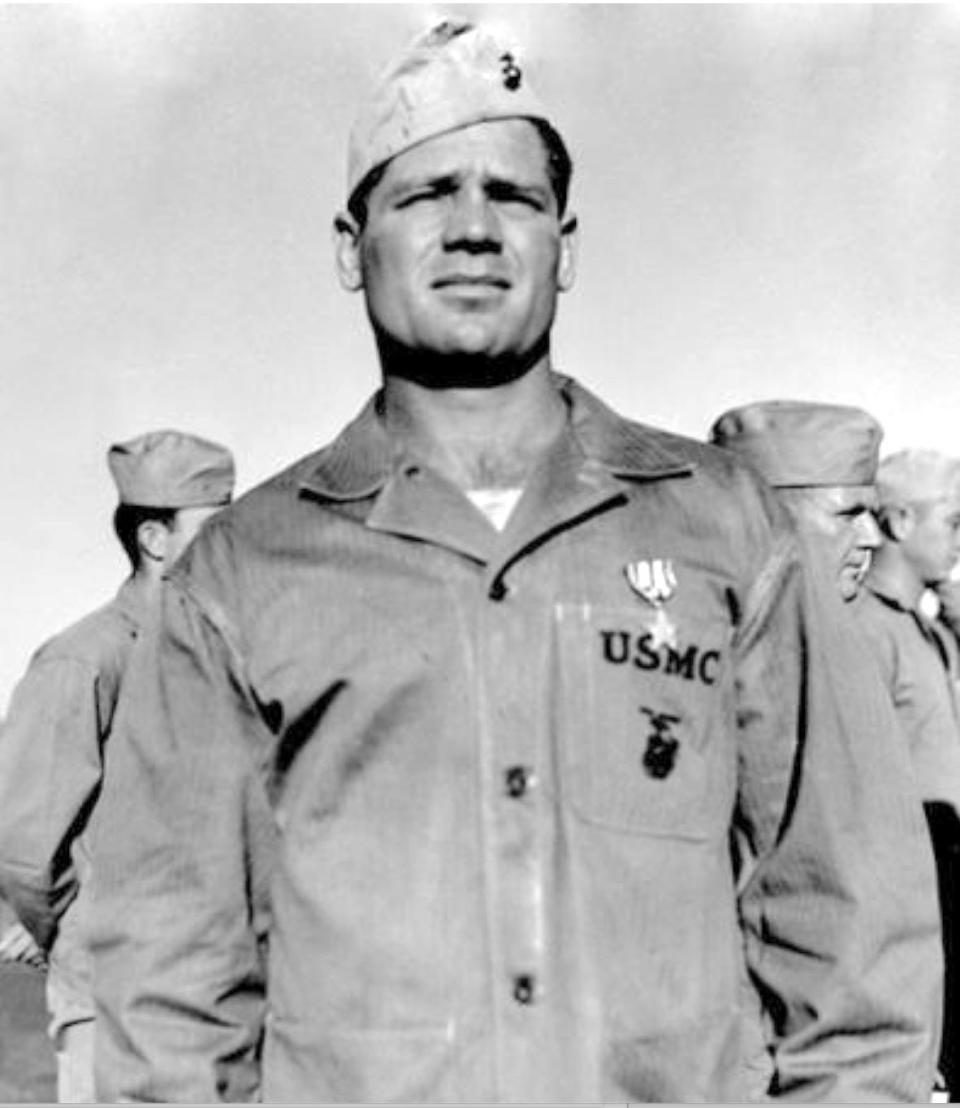
Charles Behan also played one season before joining the Marines. In 1942 he caught four passes for 63 yards for Detroit. Behan had starred at Northern Illinois, where he was also one of the nation’s top decathletes.
Company F, 2nd Battalion, 29th Marines assaulted Sugar Loaf Hill on Okinawa May 18, 1945. Wounded in the mouth by shrapnel, Lt. Behan refused evacuation. Unable to talk, he directed his men with hand signals. “Risking his life by taking an exposed position well in front of the platoon so his men could see his signals, he led the attack through withering enemy fire,” read his citation for the Navy Cross he earned that day.
While tossing grenades at a machine gun nest, Lt. Behan was mortally wounded. He dragged himself behind a rock and continued to direct the attack until he lost consciousness.
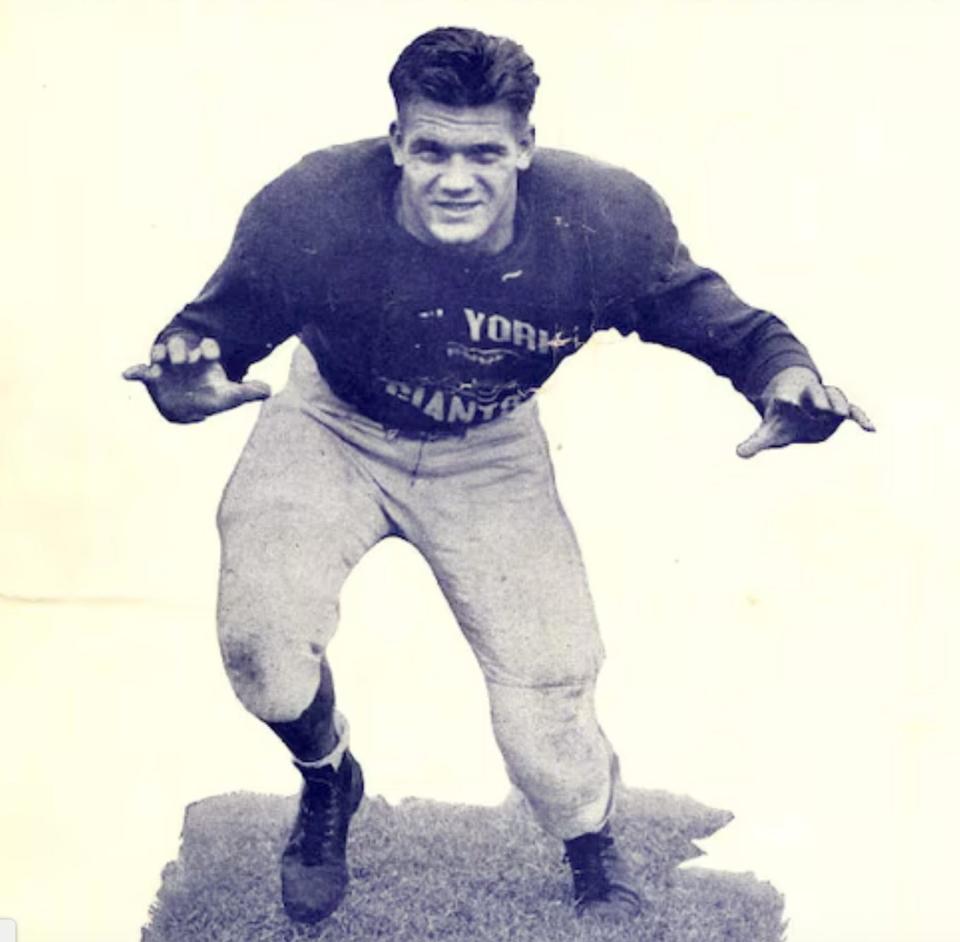
The name Al Blozis is unknown today, but in the 1940s he was a star tackle for the Giants – a fifth-round 1942 draftee who played two full seasons before entering the military.
Just six weeks after playing in the 1944 NFL Championship Game, Lt. Blozis was killed by machine gun fire while searching for missing members of his platoon in the Vosges Mountains of France.
NFL players' service in Korea and Vietnam
The 2011 Bleacher Report analysis concluded that more than 200 NFL players served in Korea. That list included some of the top stars of that era, such as lineman and coach Mike McCormack, cornerback Dick “Night Train” Lane, and QB Eddie LeBaron.
An additional 28 NFL players fought in Vietnam, and a handful shipped out to the Middle East. Three of these men lost their lives, including Tillman.
In 1968, the Bills drafted Bob Kalsu, All-American tackle from Oklahoma. The following year Kalsu entered the Army to satisfy his ROTC obligation.
A 2014 Sports Illustrated profile of Kalsu stated, “[Most] draftable pro athletes elected to serve in the reserves. Kalsu's family and friends urged him to go that route.
“‘I'm no better than anybody else,’ he told them. 'I gave 'em my word,' referring to his promise to serve on active duty on joining ROTC. 'I'm gonna do it.'
“He said, ‘If I don’t go, somebody will have to go in my place.’"
After artillery training at Fort Sill, Kalsu deployed to Vietnam in November 1969. By July 1970, Kalsu’s battery supported the 101st Airborne from vulnerable positions at Fire Support Base Ripcord near the A Shau Valley.
SI painted the picture: “Kalsu was involved in the gnarliest battle going on at the time in Vietnam: an increasingly desperate drama being played out on the top of a steep, balding shank of rock and dirt that rose … 656 feet above the jungle floor.”
The howitzers of Battery A sat on its crest, an area no bigger than two football fields.
The NVA attack began in earnest on July 1, determined to drive the 300 or so Americans off Ripcord. As many as 5,000 NVA soldiers had massed in the surrounding jungles, and by July 21 they were lobbing more than 600 rounds a day on the firebase.
Kalsu was killed by one of those shells. He died only hours before his wife gave birth to their son.
Two days later, the powers-that-be decided enough was enough, and they evacuated the survivors from the hill.
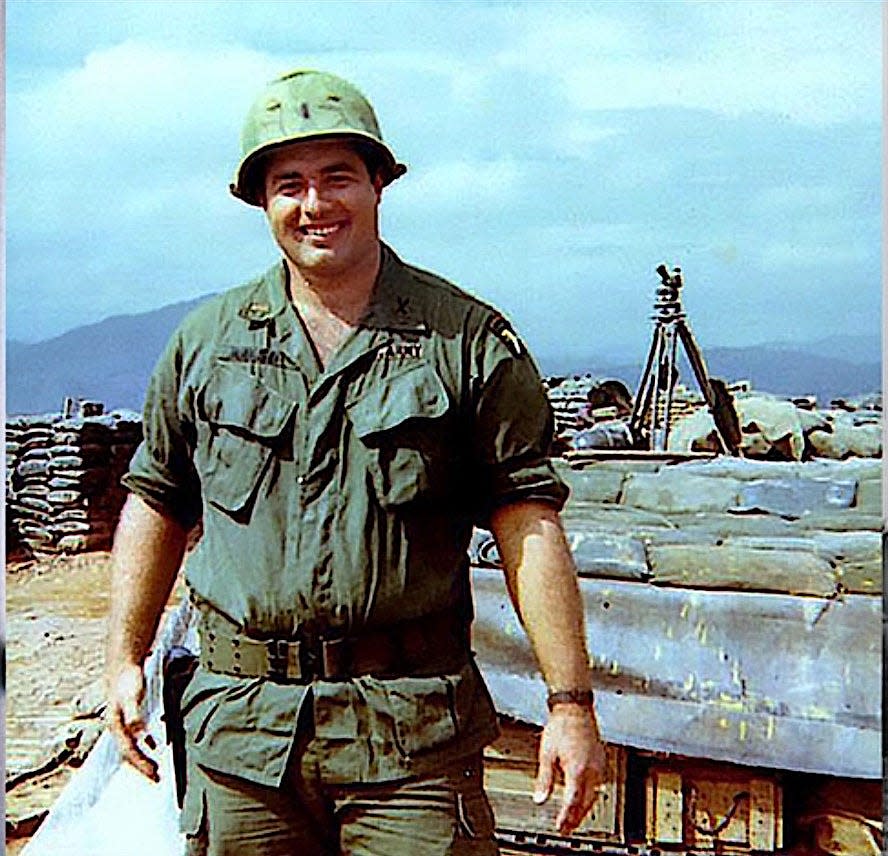
For decades, Kalsu was identified as the only NFL player killed in Vietnam
The league finally realized that Air Force Maj. Don Steinbrunner, a rookie offensive tackle with the Browns in 1953, was killed in Vietnam in 1967.
Cleveland took Washington State tackle Don Steinbrunner in the 1953 draft. He played eight games, including the 1953 NFL Championship Game, won 17-16 by the Detroit Lions.
In 1954 he left the NFL to fulfill his Air Force ROTC commitment. He liked military life and decided to make the Air Force a career.
In 1966, Major Steinbrunner deployed to Vietnam as a navigator with the 12th Air Commando Squadron. Injured on one mission, he turned down a safer ground assignment. On July 20, 1967, his C-123 Provider was shot down over Kontum in the Central Highlands, killing him and four other crewmen.
Epilogue: More heroic tales to tell
I will write in a later column about the best-known footballer to have served in Vietnam: Rocky Bleier of the Pittsburgh Steelers. Bleier was badly wounded in both legs, and doctors told him his football days were over.
He went on to win four Super Bowl rings.
“In combat … when you're put in harm's way, there is a chance of permanent injury,” Bleier said. ”There might not be a tomorrow, and that is always the question that lingers in one's mind. Will I get back safely? Will I be able to survive this combat?
“In football, there will always be next week."
This article originally appeared on The Providence Journal: Killed in Action: NFL players who lost their lives in military service

